Do Malaysians Still Want Caning in Schools?
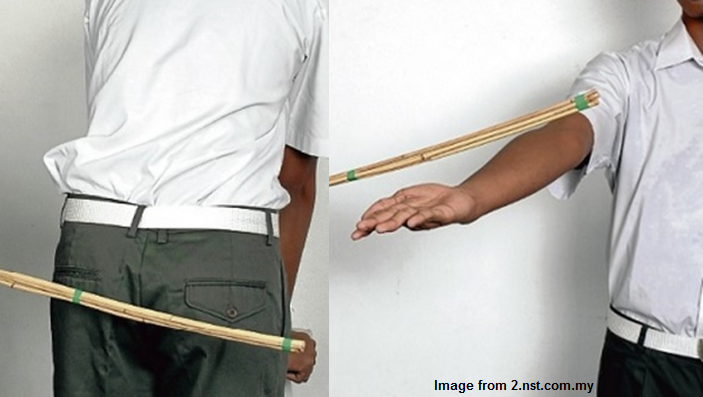
- 551Shares
- Facebook484
- Twitter10
- LinkedIn4
- Email4
- WhatsApp19
Caning in schools is an issue that basi long time ago already, but it’s still being hotly debated in Malaysia today – why? Because from time to time, we get horrifying news of teachers abusing corporal punishment, in our faces! So people sure freak out when they read stuff about teachers punching students bloody, slapping a boy until his eardrums rupture, making two kids wear cowbells around their necks, and in the latest case…
The Star reported that 10-year-old Jayarajoo from SJKT Bekoh was caned 14 times for not completing his mathematics test in time, causing him to suffer a swollen shoulder and cuts on his back. When the boy’s father, M. Shanmugam, went to the headmaster, the only response he got was that the school was unable to take action against the teacher. Dad said that his son had difficulty answering the 15 questions in five minutes. Doesn’t sound like misbehaviour to us… just saying.

Our hearts go out to Mr. Shanmugam, who’s probably very distressed over what happened to his son. Where is the line between discipline and abuse drawn? Is caning still legal in schools these days?
Yes, caning is still legal in schools, BUT…
Malaysia continues to implement caning on students, even though more than 100 countries have already banned corporal punishment in schools (starting with, none other than Sweden). But the strange thing about our school caning rules is that, legally, it can be meted out on MALE students only. True story!

Whaddup, whaddup is in the tin can of these people’s minds? They think that schoolgirls are so angelic – all pigtails and pressed collars? Remember that brutal bullying of a schoolgirl, captured on a nauseating video clip that achieved national infamy. Clever girls… now go start your own gang with a tacky name.
See, boys AND girls have proven that evil can lurk inside both chromosomes XX and XY. Forget feminism here, we’re talking about how kesian it is that boys are slapped with a heavier punishment, for the same flame wrongdoings that schoolgirls are also capable of!

And apparently, this isn’t our only sexist law on punishment – judicial caning also makes an exemption for women! Meaning, if a woman commits the same crime as a man, she don’t get the switch, but he do?… Niceeeee! I mean, the wimminfolk couldn’t handle the time, but gee we could totally handle the crime, right ladies?
Here are government guidelines on school caning:
- Caning is permitted for BOYS only.
- In most circumstances, caning can only be conducted by the Headmaster.
- Teachers can only cane when the Headmaster delegates this power in writing, and the teacher must be a permanent staff of the school.
- The student can only be caned on the buttocks (over clothing) or the palm. He cannot be caned on the bare buttocks.
- Caning must be conducted in a confined area.
- The student’s parents will be informed and invited to witness the punishment.
- Caning is only for repeated or very serious offences.
Then the girls, leh?
The idea of approving caning for schoolgirls has been actively debated… with majority support for equal punishment for both genders. ‘Twas the Education Ministry’s survey of teachers from all-girls and co-ed schools, which showed that teachers wanted permission to cane misbehaving girls – with 64% in agreement.
If it does become legal, it would be applied to the palm of the girl’s hand, whereas boys are typically caned across the seat of their trousers. Eh waaait… that’s not what happened in Jayarajoo’s case! If the teacher was supposed to go for the bum, how did his shoulder end up with the injury? Aiming so off wan meh?

But all this hoopla about “Girls: To cane, or not to cane” has been branded as something of ignorance.
“The Education Ministry and those favouring or opposing the introduction of caning to discipline schoolgirls must be behind time. They give the impression that this is something new.” – V.K. Chin, The Star
Chin highlighted that female students have been caned forever in Chinese schools… (k fine, he didn’t actually use the word “forever”) with or without permission from the education department anyways. “This is one way for teachers to impose their authority, and the cane would be used for the slightest excuse,” he noted.
So, although caning is “technically” not legal for schoolgirls, they’re no strangers to its bitter sting. Does this mean the practice is more prevalent than meets the eye?
Is the cane whipped out very often in schools?
In spite of the practice becoming unpopular and even taboo in these days, reports of teachers who abuse corporal punishment still surface, like the case where a student was caned for bringing pork to school for lunch! (How awful! Why is he being punished over his private choice of meal?!)
In another case, a 13-year-old boy was caned by his discipline teacher in the toilet for not bringing his PE attire, because the instruction was given out in BM. The father explained that his son, Ching Fei, who was enrolled in a Remove Class at SMK Taman Megah Ria, did not understand BM. Lim had come home from work and found his son hiding in his room and asked the boy why. “After asking him a few times, he told me what happened and showed me the red bruises across the back of both his thighs,” he told during a press conference.
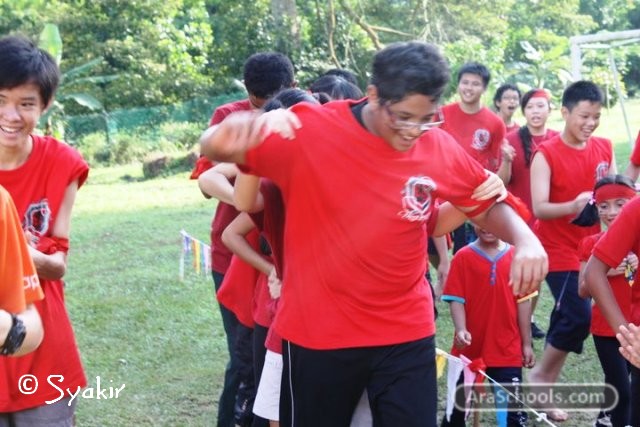
Why the teacher had not bothered to first find out the reason for Ching Fei not bringing his attire, before whipping out the cane, we do not know…
Let’s face it, even while “guidelines” exist, there’s no hiding the fact that some teachers are just no Care Bears. Who among us can say that we’ve never been hit by a teacher or even witnessed a fellow student being hit? And the real question is, in whose interest is it to use the cane – the student’s, who is being disciplined, in love… or the teacher’s, who’s simply venting his frustration? So, is caning actually useful or useless?
Caning could have nasty “side effects”
There are parents who believe that a sharp taste of the cane is sometimes necessary. T. Ravinder, a father of two, has no qualms about having his children caned by their teachers. “If they’ve done something wrong, then I’d say go ahead. In my day, if you came home and complained about being caned, you’d get a few strokes from your parents as well,” he reminisced. “As long as they are made to understand why they are being punished, I don’t see any problem with caning students.”
For Daniel Lim, an accountant living in Australia, caning should be enforced in schools. He asserts that his experience of being caned has made him a better person. “The fear of getting caned is a pretty good control lever,” he said. “I was quite a good boy in high school because that fear kept me from causing mischief.” As for the pyschological scars, Daniel claims that neither he nor his peers suffer from low self-esteem. In fact, they all feel confident about themselves.

But others suggest that caning could bring nasty “side effects”. UKM Senior Lecturer in clinical psychology, Dr. Ng Lai Oon, remarked: “If you ask old school teachers, they would say that caning actually works quite well. However, we have to understand that caning is something that can trigger side effects, such as anger, rebellion and fear.”
And where public caning is concerned, Dr. Ng is sure that the element of shame may have drastic consequences. He cites an example of a 14-year-old boy who developed split personalities after being caned publicly in school (oh, who forgot to send that teacher his copy of ‘Government Guidelines’ which clearly prohibits public caning?). Through his clinical experience, Dr. Ng has seen many suffer the psychological consequences of caning, be it short- or long-term.
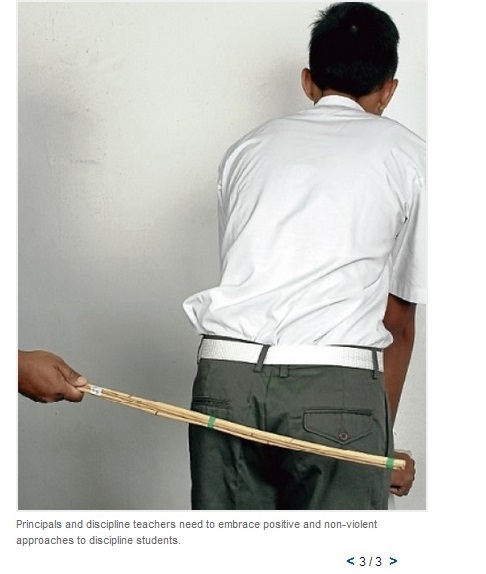
If don’t use cane, then use what?
As school caning became increasingly unpopular, the Education Ministry introduced a three-stop process in 2008 to keep the stick at the back of the cupboard as a “last resort” disciplinary action. Not that we’d mind Mr. Slim there, shacking up with spiders and never seeing the light of day again. Ever.
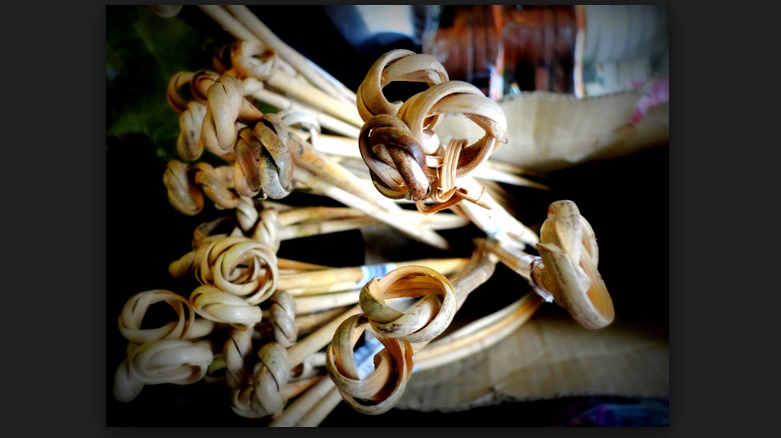
The three-step process:
Step 1: Teachers will first reprimand the student and warn him about his behaviour. If this doesn’t work…
Step 2: Teachers will call in his parents to discuss the matter. If this also fails…
Step 3: The student will present himself before the school disciplinary committee for a talking-to in the presence of his parents. Only, if this step fails…. ROTAN!
According to Datuk Noor Rezan Bapoo Hashim, Deputy Director-General of Education in the Schools Department, the ministry decided that this “soft approach” should be the preferred option to start with. Sounds more like they’re “warming up” the student for THWACK!!! :p

“Before doing anything, teachers should first reprimand the child and warn him about his behaviour. Caning is the last resort. I cannot stress that enough,” she expressed. Noor Rezan exerts that teachers should not be emotional about it. Yeah, good luck with that…
The question is, can teachers comply with her urgings to not be so emotional? Or will they continue to instil their methods of discipline. S’not like anyone’s there to stop them at that point of time… What about repercussions? Coz students are disciplined when they step out of line, aaand citizens are disciplined when they step out of line, sooo what about teachers who step out of line?

What happens when teachers cross the line?
Puh-lease, there are teachers who’ve crossed the line and come under public crossfire! Sadly, many are not served befitting disciplinary measures after their actions. *shrugs*
Take for example the case of the teacher from SJKC Khai Meng, Sungkai, Perak, who made two primary schoolboys wear cowbells around their necks and offered them grass to eat because they did not complete their homework. One of the boys’ uncles came forward and said, “she had caned the boys twice each before that.” He added that the teacher took pictures of the boys with her mobile phone and threatened to post them of Facebook!

You know what happened after that? The teacher was issued a “stern” (oooh, we’re shivering our timbers) warning letter and then transferred to another school. Nice to know she continues to teach fresh victims other children now.
Then in another recent case, an eight-year-old, SK Port Dickson student, M. Sharmini, had a shoe thrown at her head by Moral Education (ironic much?!) teacher, Abdul Rahim Jaafar. Despite bleeding profusely from her head, the Moral Education teacher went on with his class which left Sharmini to seek help from the next class. The Moral Education teacher was transferred too, as “punishment”.
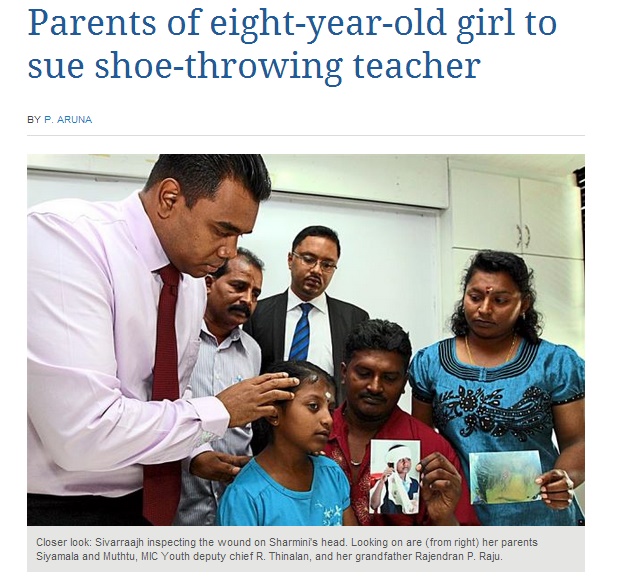
MIC Youth Chief, C. Sivaraajh, took up Sharmini’s cause and threatened to haul the Moral Education teacher to court to serve as a lesson to others. “We want to make sure the (Moral Education – we added that) teacher won’t do this to other students,” he responded. Sivaraajh also stated, “many who are involved in such cases are merely transferred to other schools, then later merely asked to apologise with no further action.” How bermoral!
So, in light of all these cases, there are opposing sides to the rave party of whether caning and other forms of corporal punishment should be kept on in schools.
So, wan or dunwan, now?
Some have urged parents to trust teachers in disciplining students, and some say that without the rotan, they’d probably have become a “pansy ass fruitcake” (99Chan, LowYat Forum), while others want to do away with the practice altogether.

It’s one thing to say “trust the teacher”, but quite another to actually put your child in the care of a potential loony bin, like this nursery school teacher who gagged a little boy’s mouth with cellophane tape because he wouldn’t go to sleep during nap time. The teacher’s excuse for her behaviour? PMS! No joke – the nursery told Moey Sook Yeng, the mother of the three-year-old boy that her mood swings (inside her head, *incoherent whisperssss*) made her do it.
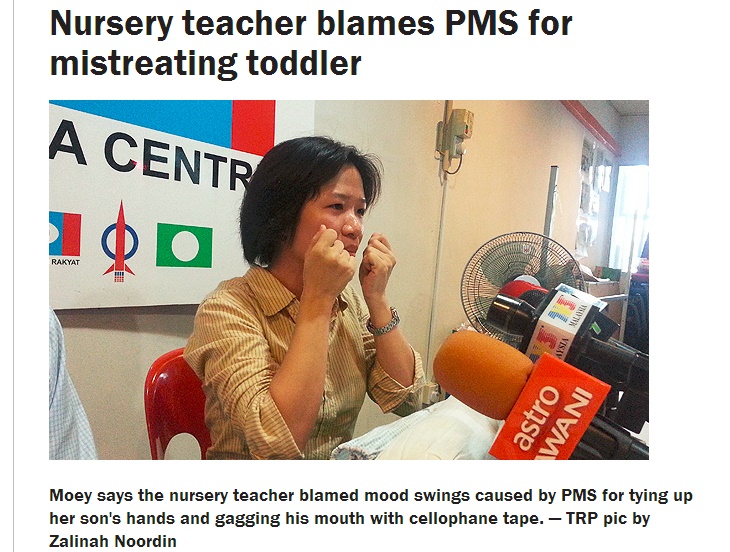
For a three-year-old, it might be easier to erase this disturbing memory from his head, but what about the older kids in primary and secondary schools? The shame they feel in being punished with the cane leads to emotional and psychological pain. There’s always a possibility for the practice to be abused by teachers, and that’s what parents don’t want to happen.
But if we don’t have caning then what do we have, leh? Don’t panic – there are alternatives to the switch!
1. Positive reinforcement
According to educational experts, positive reinforcement can reduce the frequency and extent of student misbehaviour. For example, teachers can praise students, write positive comments in their books and give material rewards. According to an article on New Straits Times, children respond best to respect, praise and encouragement.

2. Detention or chores
Also teachers could try a super boring afternoon of detention, or sweaty chores like painting the school wall and cleaning toilets, to get mildly rascal students to toe the line.
3. Guidance and counselling
At other times when there are students who are being difficult for who knows what reasons, experts claim that teachers can offer guidance and counselling to try and understand their problems.
Look, we’ve all been caned before (in school and at home) and we turned out ok…. right? I feel normal *twitch, twitch*, do you feel normal *twitch*? So tell us what you think – should the cane stay or go?
- 551Shares
- Facebook484
- Twitter10
- LinkedIn4
- Email4
- WhatsApp19




